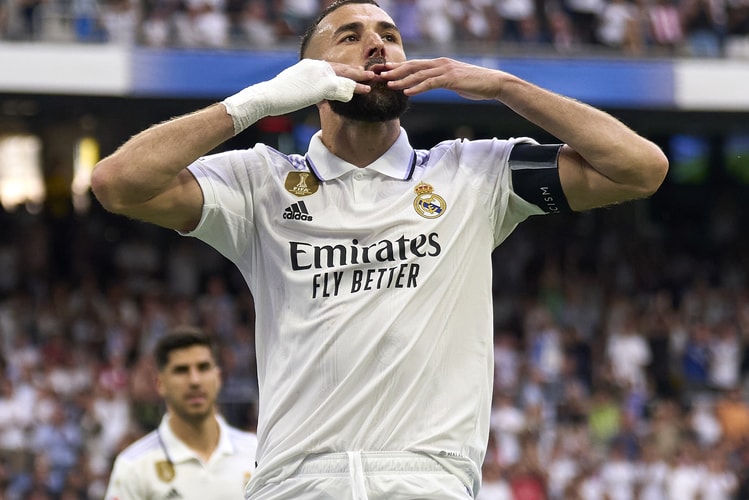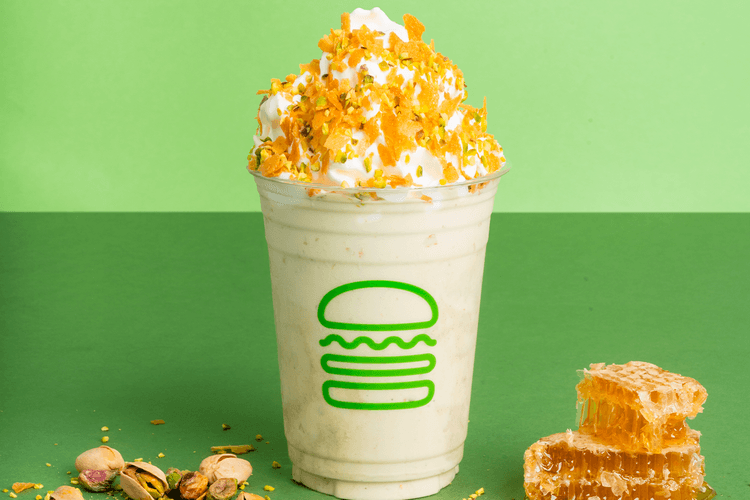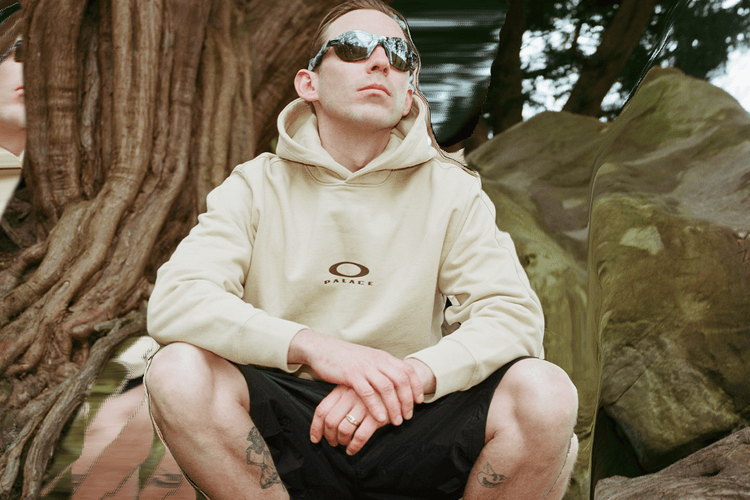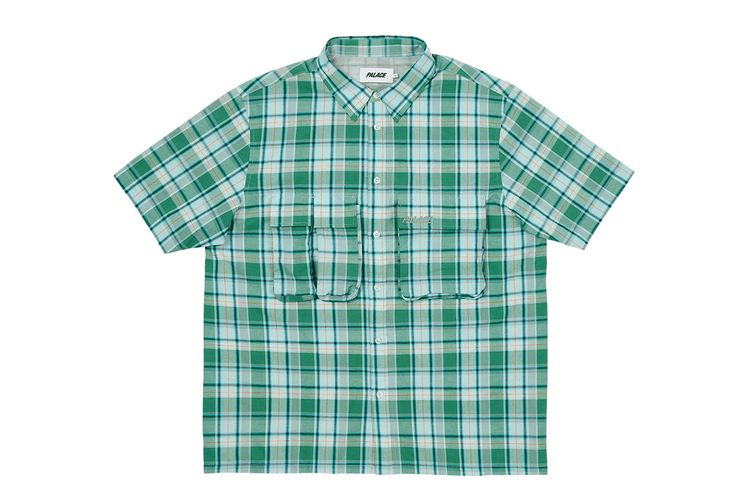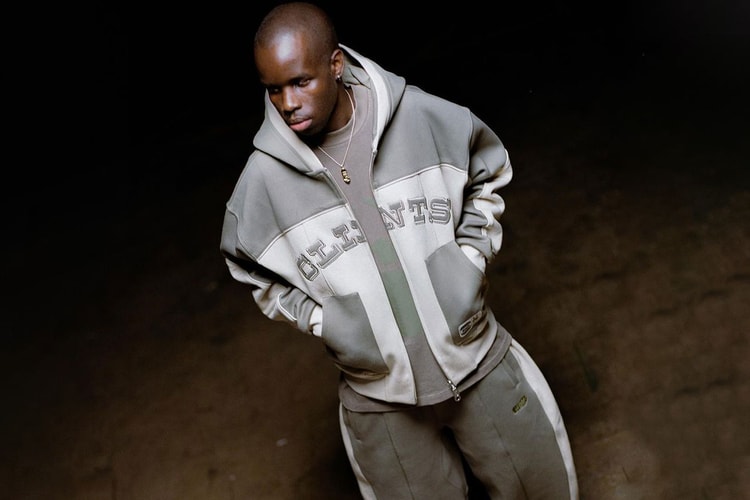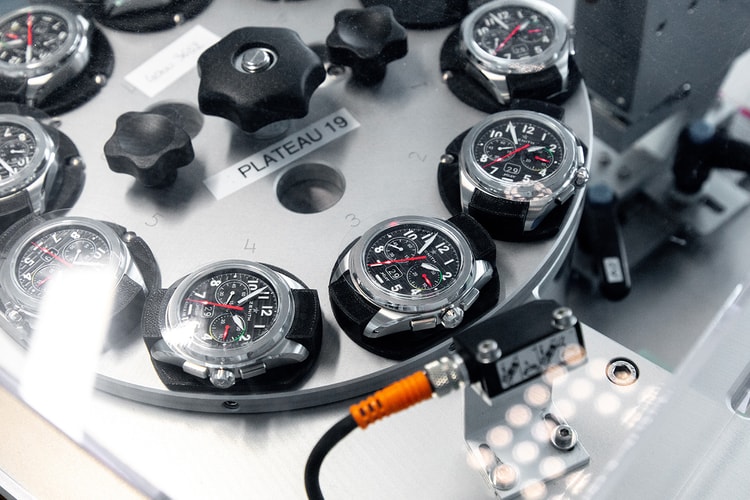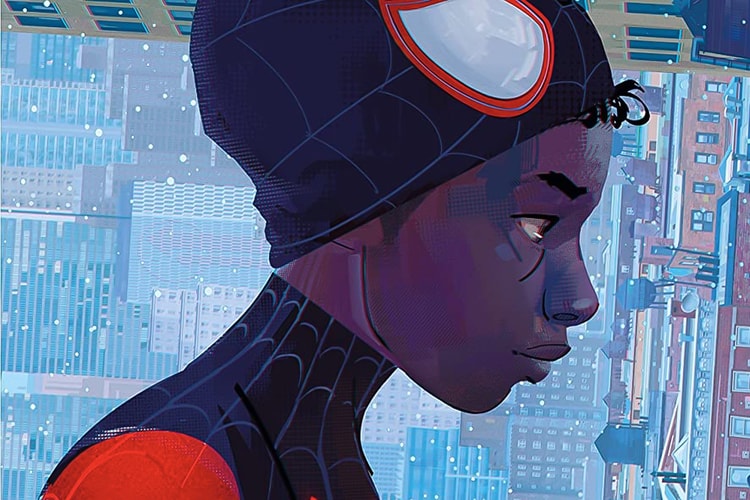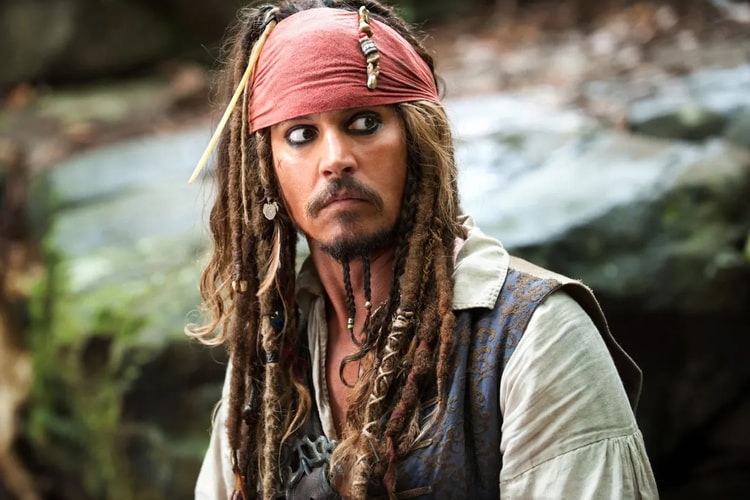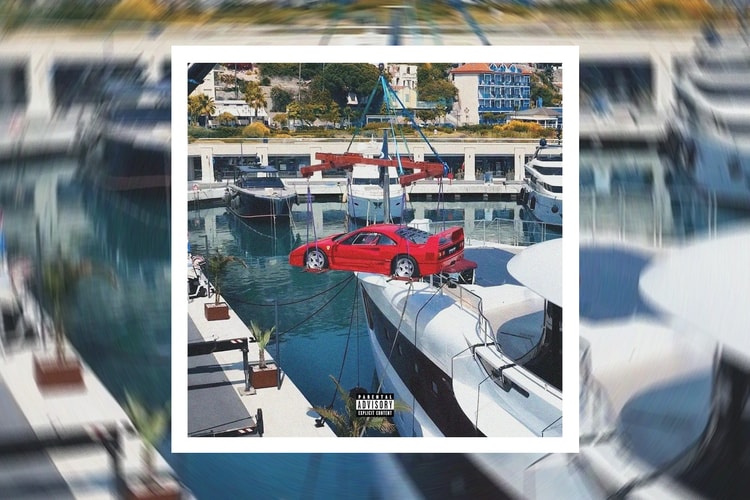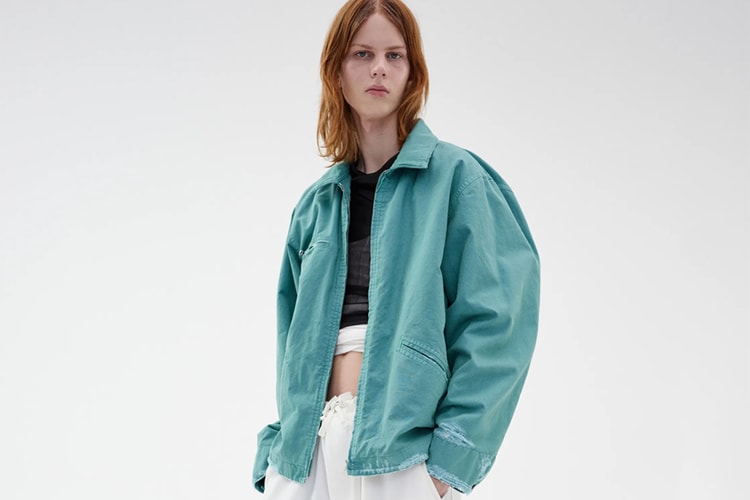Paul Dugdale Creates The Visual Bridge Between Live Concerts and Viewers At Home
The filmmaker opens up about the importance of trusting his gut and the process of creating award-winning concert films such as ‘Adele One Night Only’ and ‘Taylor Swift’s Reputation Stadium Tour.’

Paul Dugdale Creates The Visual Bridge Between Live Concerts and Viewers At Home
The filmmaker opens up about the importance of trusting his gut and the process of creating award-winning concert films such as ‘Adele One Night Only’ and ‘Taylor Swift’s Reputation Stadium Tour.’
Paul Dugdale landed his first big job — directing the band The Prodigy — by showing producers a video he shot using a DV Handycam. The visual was scratchy at best, and featured his rowdy friends at a 2000s indie night getting drunk, stage diving and throwing up. There were no professional intentions behind the creation of the video; it was filmed to capture a messy night, but it ended up playing a pivotal role in the director’s career.
Over the past 15 years, Dugdale’s name has been attached to major visual music projects like Adele One Night Only, Glastonbury Festival: Live at Worthy Farm, Ariana Grande: excuse me, i love you, Coldplay: Ghost Stories and Taylor Swift’s Reputation Stadium Tour, all of which have either taken home or received Emmy, BAFTA, Directors Guild of America and GRAMMY awards or nominations. “When you watch a concert on TV, in a cinema, or online, I’m the guy who is trying to translate what it’s like to be at that show,” he says. Dugdale sits in a control room staring at a ludicrous wall of monitors, communicating with his team over radio, confidently calculating camera angles and widths and deciding on the pace of the cut — all at once, and all live. All the decisions he makes are done with the forethought of the artist’s creative vision and sentiment of the music. “I’m basically the middleman between an artist playing an amazing show in a venue, and someone experiencing the concert in their living room,” he says. “But as it passes through my hands, I’m trying to enhance it and maximize the emotional reach and potential of the performance by showing all the best bits.”
“Have maximum conviction behind your ideas.”
Self-confidence and self-trust have proven to be two important traits to carry in this line of work, and he understood both as a fine art student at the prestigious Central Saint Martins. At a phase when young adults normally fear the uncertainty of their future (and their life, for that matter), Dugdale was taught the value of being steadfast with his decisions. “Execute your idea or vision and have 100% confidence and conviction in what you created,” he shares of his greatest lesson. “Have maximum conviction behind your ideas.” Even though he never imagined becoming an award-winning filmmaker, he was always passionate about art, particularly photography, and music, and spent his time attending festivals and playing gigs as a drummer for a band in the noughties. He began really learning about cameras, lenses, lighting, staging and planning a multi-camera shoot as a film camera assistant, working on mainly music TV shows or concerts, but also a broad assortment of TV and film productions such as TFI Friday and Live Earth. “The most important aspect of this early work was to be able to listen and learn from other directors, and I was lucky enough to work for several of the world’s best,” he tells Hypebeast. “There’s no better place to learn than actually being amongst the people who you admire and respect, so I seized every opportunity I could to absorb and learn.”
What is the scope of your job as a writer, director and creative lead?
The scope of my role is wide-ranging and depends on the project. I’ve written and directed documentaries, for example, for The Rolling Stones — interviewing them, researching and constructing a story of a tour into something that has a succinct narrative and texture.
Sometimes I’ll create entire conceptual creative concepts, design how they should be staged and captured and then shoot it, such as Live from Worthy Farm, our film for Glastonbury Festival, which featured many artists over an immersive, six-hour live film.
Other times, the objective is to capture a tour show that already exists, and our sole objective will be to represent the performance and production in the most effective and emotive way possible. I collaborate with a large group of incredibly talented people who help support this process on each project. We always make our projects as a team, and even if mine is the principal vision, it’s entirely a group sport.
Can you run us through a day in your work life?
I have a huge variety of day-to-day activity at work, but I guess it could be mainly summarized in three separate categories.
First is pre-production. Once the project is commissioned, this involves having big conversations and meetings with artists, managers, record labels and broadcasting platforms, as well as financiers, promotors, producers and crew. Every conversation helps with getting a bunch of ideas scribbled in a notebook closer to making it onto the big screen. This also includes a lot of research, both of the artist and the show we are filming, looking into past references that might relate to the project in some way, scouting the location we are filming and road-testing any new tech we might want to use. The conclusion of the pre-production is me compiling specific show direction notes that myself and the team then use as our roadmap to capture the show.
Second is production. We gather together a stellar crew of people, travel to wherever in the world the performance might be, set up all the equipment and then we shoot the show. Sometimes we will capture more than one performance and edit them seamlessly together, sometimes it will be a single show, live to air. Either way, the day probably consists of looking at camera positions and lenses to see if we got our pre-production planning right. In rare circumstances we might get to do some light rehearsals, or maybe block through parts of the show, particularly if we want to have cameras in positions that are contentious for the artist or pose safety concerns. Then when show time comes, we just have to be ready for anything, hold on to our hats and capture the show as it happens. No retakes, no second chances.
Third is post-production. If the project wasn’t aired live, we’ll collate all the rushes into drives and begin to edit the film. The music will also get remixed and laid into the edit, and after this, the footage is color-graded to look fantastic on the screen. Through the process, there are tens of thousands of decisions, and the final outcome of the film is very much a sum of all the choices made along the way — some big, some tiny, but they all count towards making the difference of something average or something really special.
“There’s no better place to learn than actually being amongst the people who you admire and respect, so I seized every opportunity I could to absorb and learn.”
Tell us the most memorable or fulfilling experience you’ve had working with an artist yet.
There have been a myriad of moments in my career that have been ludicrously creative, fulfilling and memorable. Often, there will be moments where an experience transcends the sense of “this happened at work today” to something that becomes a really profound life experience.
It can range from setting up a dawn shoot for Coldplay to the sound of the call to prayer at Amman Citadel in Jordan, which was completely amazing and profound, to something as silly as trying to have a really serious conversation with the manager of The Rolling Stones while Mick Jagger dances around a hotel room specifically trying to put you off. I remember really loving a day with Sam Smith, just us with choreographer Holly Blakey, on stage at The London Palladium, blocking through a one shot performance we were filming for MTV. No cameras, just the three of us working it through together on stage. I loved that. Pure creativity.
Of course, the most fulfilling thing is to see people’s reaction to the film you make. Sitting in a cinema surrounded by people who woop and cheer through your concert film is incredible. Our latest project for Coldplay was a global cinema release which entered the box office top 10 when it was released. For a filmmaker, that’s a dream come true, but to see videos on social media of people dancing and cheering in movie theaters around the world is totally wild to me and the team.
As a creative for music-focused visuals, do you have a metric for success? When can you say that you’ve accomplished your goal for the artist?
I guess the obvious metric for success is views — how popular something is in the box office, or the numbers it does on Netflix, Amazon, Disney or YouTube. For the vast majority of our films, it’s a collaboration between the artist and I, and our objective is to create something that will become part of that artist’s back catalog, just as if it’s a music video or the latest record release.
I always have a very clear vision of how the finished piece should look and feel. It’s partly through personal taste and intuition, and partly understanding and supporting the artist, the show and their fan base. I feel a very strong sense of union between sound and vision. Success, for me, is if we realize this original vision (or an evolved version of it) without it becoming too diluted or diverted along the way. First and foremost I want people to watch and enjoy the piece, but success for me is if we are able to create a film that perfectly complements the performance, the artist and the music. I have to trust in my gut for what that is; being a tastemaker is crucial. I have an astute and sensitive barometer for what that is, and it gets more finely tuned with each project.
“In what we do, if you panic, you’ve failed.”
You’ve helmed everything from TV specials to documentaries and full concert movies. Can you guide us through the general process when executing these projects?
Everything starts from my camera plot. This is the blueprint of the building blocks for the edit. If the cameras are in the wrong position, then you’re in trouble because it’s impossible to change them once an audience is in a venue. When a show starts, it’s like a runaway train, so the camera plot is the most important part of the general process of a concert film. The rest of the general process for each of those things is colossal, but I’m lucky to work with some very clever and hard-working people who make it all happen.
Do you have a favorite or preferred visual format, and can you tell us why?
I like watching music films that feel like they’re a piece of cinema. Something where there’s creative intent behind it rather than just coverage. Watching our projects on the big screen where the music is loud, the pictures are large and the room is dark is the most immersive version of the experience, and I guess partly because it’s closer to an actual gig-going experience. That’s the optimal way to present our work.
You’ve worked with some of the industry’s biggest artists on their most-celebrated visual releases. Is there still a part in the process that you get very anxious or nervous about?
There’s so much that can go wrong at any moment, especially if you only have one chance or if the show is live to air; the stakes are very high. I always feel confident from a creative perspective, but I used to feel anxious about things going wrong technically. Now I just feel it’s part of my job to react in a constructive way and to quickly find a solution in the moment. In what we do, if you panic, you’ve failed. It’s kind of a self-fulfilling jeopardy; I really like to encourage the team to be technically ambitious and to push the boundaries on our projects. A lot of our productions in recent years are on a level, both in terms of scale and tech, that have not, or rarely have ever, been attempted. When you are working with such pioneering expectations, I find it quite forgiving if something goes wrong technically because we are pushing what is possible to such a degree.
I guess there are times where we intentionally make it high risk, high reward. I have huge trust in the people around me that the very best effort has been made to avoid anything going wrong, but I’d be lying if I didn’t get sweaty palms every once in a while. He who dares wins… mostly.
“The first step is to just make stuff. Make it no matter how primitive it might be.”
What are the necessary first steps someone should take to enter a career in music as a visual director?
There are so many different ways of doing it, it’s rare that two multi-camera directors’ routes are the same. I always say that the first step is to just make stuff. Make it no matter how primitive it might be. Every time you make something you learn so much, and you never know where something might lead you.
What was the biggest challenge you’ve had to face so far, and how did you overcome it?
Dealing with toxic behavior on a project was probably one of the biggest challenges. It wasn’t an artist or an individual close to an artist or management, label, etc., just someone on the outskirts of a production’s orbit but that caused much frustration and wasted a lot of our time. I guess it happens in all lines of work. All in all we’ve been pretty lucky over the years, but at the time it was incredibly tiresome. I overcame that by promising myself that I wouldn’t ever be put in a position with someone like that again and to make the next film we did really really f*cking awesome.
Is there a secret to career longevity in this industry?
It comes down to staying passionate about it all; finding satisfaction in the work, which leads to happiness, which leads to passion and ambition. I still feel as passionate about it all as I did when I started, probably more so now because I can see such potential in everything. The colleagues I surround myself with are inspirational and absolute global leaders in what they do. I go to work everyday feeling lucky and full of enthusiasm, so I hope my work continues to reflect that.
What are some habits you follow regularly to always maintain a good headspace for work?
Trying to carve time to exercise was really valuable advice to me. I like the physical push but I also find it really meditative to focus your mind on your body.
“I still feel as passionate about [my career] as I did when I started, probably more so now because I can see such potential in everything.”
What does a day off look like for you?
Spending time with my family, hanging out with friends, catching up with culture (art galleries, theater trips, watching gigs), working out; trying to do anything that doesn’t involve staring at a laptop.
How do you see your job evolving with the music industry in the next five years?
Concert films and music documentaries seem to be going from strength to strength at the moment, and I’m so grateful for streaming services in particular, because watching something you aren’t necessarily a big fan of has become a much lower risk than it was when you had to buy a DVD, which opens up music films to a far greater audience.
Experiential concert films or cinema broadcasts feel like they are becoming more common and I’d love to see more bands showcase a new album by performing it live to cinemas. A cinema doesn’t beat a real gig, of course, but in terms of an immersive experience, it’s when I find music films can be at their most powerful.
If not working in music, what would you be doing?
Art.
Stay tuned for more features with music industry professionals — from managers to sound engineers, stagehands and others; the people who make the music world go round without standing behind a microphone.



